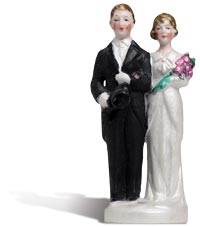Culture and heritage
The culture and heritage research theme allows interdisciplinary teams to explore the construction of identity and culture through notions of memory and place.
Working with the life histories of individual men and women from the archives of Mass Observation, research at Sussex is bridging the gap in our understanding of love across the central years of the 20th century.
The player will show in this paragraph
Observing love in the 20th century
The nature of love has long exercised the minds of poets and philosophers. Historians, however, have only recently begun to approach the emotions as a legitimate subject of study and have tended to concentrate on advice literature rather than the experiences and social practices of individuals. A research project by Dr Claire Langhamer aims to address this gap in our understanding. By working with the life histories generated by the British social research organisation, Mass Observation, at the University of Sussex, Dr Langhamer is studying the meanings and uses of love across the central years of the 20th century.

Mass Observation was established in 1937 with the aim of constructing 'an anthropology of ourselves'. The organisation recruited volunteers to study the everyday lives of ordinary people in Britain. Its first phase generated material into the 1950s. Its approach was eclectic but included observational research; the accumulation of diaries, the most famous being that of Nella Last; and the collection of responses to a monthly 'directive', a series of open-ended questions on a diverse range of topics. Following the establishment of the Mass Observation Archive at Sussex in the 1970s, the directive system was revived and a second-phase project emerged in 1981, which continues to generate life history memory texts up to the present.
Mass Observation offers a rich body of evidence for the history of emotional life because it has always asked its volunteers to record their subjective feelings, attitudes and desires. For example, in a 1939 directive on class, volunteers were asked 'If you are married, engaged or in love, state the part played in this situation by considerations of class?' The responses are a goldmine for understanding romantic taste and the relationship between practicality and desire within a particular historical moment. Since 1981, Mass Observation has posed questions on 'close relationships', 'having an affair', 'sex' and 'courting and dating'. Dr Langhamer's research uses sources such as these to explore romantic taste, courtship behaviour, models of commitment and the interplay between selfhood and emotional connectivity across the period 1930-1970.

Her research has established that the period witnessed an increasingly enthusiastic celebration of emotional intimacy within married life. However, romantic love, particularly when tied to sexual satisfaction, provided an unstable basis upon which to build marriages, chiefly because it had a tendency to seep beyond the confines of matrimony. The evidence suggests that an everyday matrimonial model based upon the transformative power of love carried within it the seeds of its own destruction. The late 20th-century decline of marriage for life was rooted in the contradictions, tensions, and illogicalities that lay at the heart of midcentury intimacy as revealed in the life histories of the Mass Observers.
Claire's perspective

'Over the last 10 years Mass Observation has played an increasingly central role within my research life. As well as using the Mass Observation Archive in my history of love, I have consulted it for studies of women's leisure, mid-century home life and wartime pub usage. For any historian interested in the everyday life of midtwentieth century Britain, the Mass Observation Archive probably offers the richest and most diverse collection of material available anywhere in the world. For this reason the archive underpins my future research plans. My colleague Dr Ian Gazeley and I have recently submitted a large research grant application to use Mass Observation 1937-48 for a major study of religious belief in Britain.'
Dr Claire Langhamer
Senior lecturer in history

